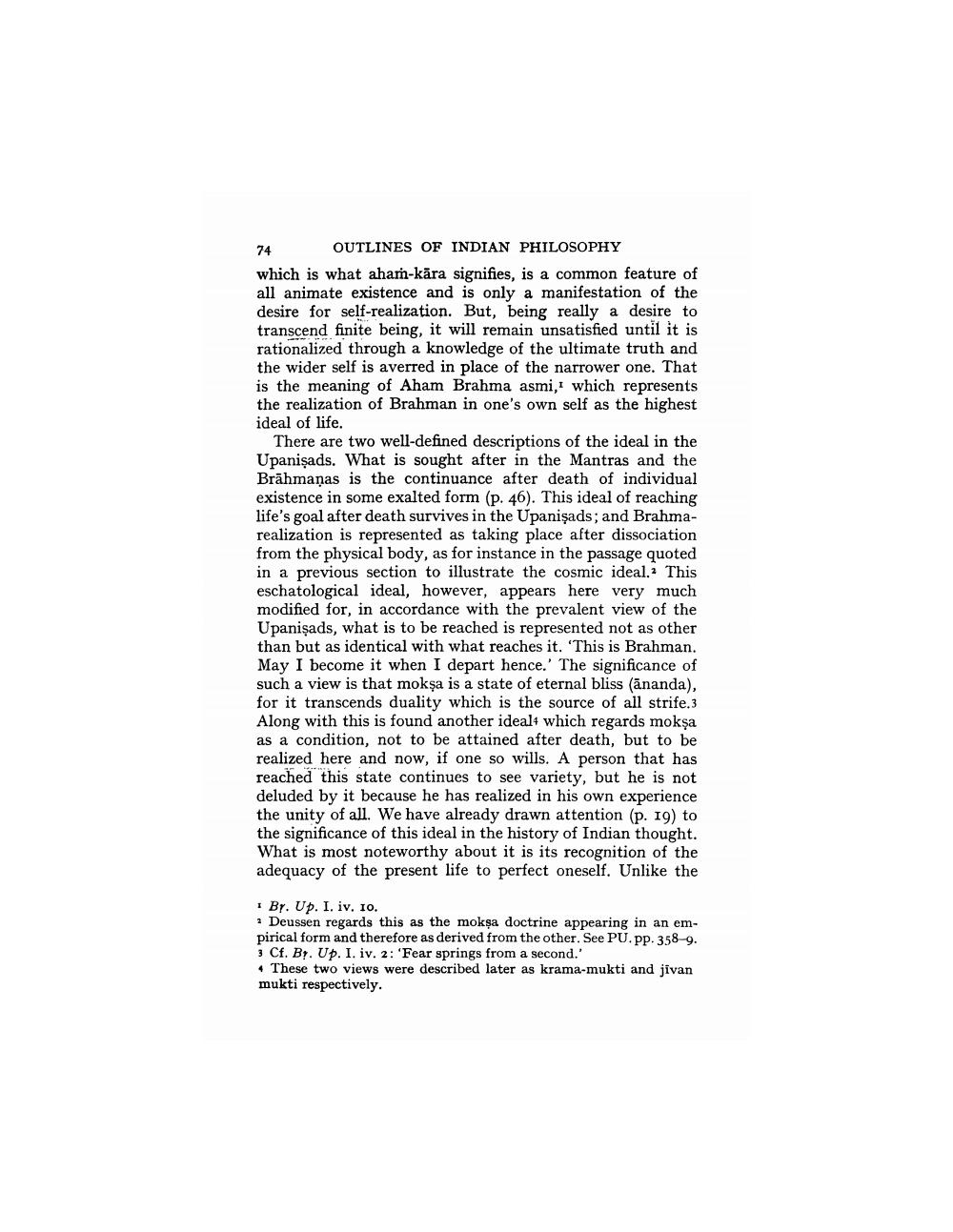________________
OUTLINES OF INDIAN PHILOSOPHY which is what aham-kāra signifies, is a common feature of all animate existence and is only a manifestation of the desire for self-realization. But, being really a desire to transcend finite being, it will remain unsatisfied until it is rationalized through a knowledge of the ultimate truth and the wider self is averred in place of the narrower one. That is the meaning of Aham Brahma asmi, which represents the realization of Brahman in one's own self as the highest ideal of life.
There are two well-defined descriptions of the ideal in the Upanişads. What is sought after in the Mantras and the Brāhmanas is the continuance after death of individual existence in some exalted form (p. 46). This ideal of reaching life's goal after death survives in the Upanişads; and Brahmarealization is represented as taking place after dissociation from the physical body, as for instance in the passage quoted in a previous section to illustrate the cosmic ideal. This eschatological ideal, however, appears here very much modified for, in accordance with the prevalent view of the Upanişads, what is to be reached is represented not as other than but as identical with what reaches it. 'This is Brahman. May I become it when I depart hence. The significance of such a view is that mokşa is a state of eternal bliss (ānanda), for it transcends duality which is the source of all strife.3 Along with this is found another idealt which regards mokşa as a condition, not to be attained after death, but to be realized here and now, if one so wills. A person that has reached this state continues to see variety, but he is not deluded by it because he has realized in his own experience the unity of all. We have already drawn attention (p. 19) to the significance of this ideal in the history of Indian thought. What is most noteworthy about it is its recognition of the adequacy of the present life to perfect oneself. Unlike the
Br. Up. I. iv. 10. · Deussen regards this as the mokşa doctrine appearing in an empirical form and therefore as derived from the other. See PU. Pp. 358-9. 3 Cf. Br. Up. I. iv. 2: 'Fear springs from a second.'
These two views were described later as krama-mukti and jivan mukti respectively.




